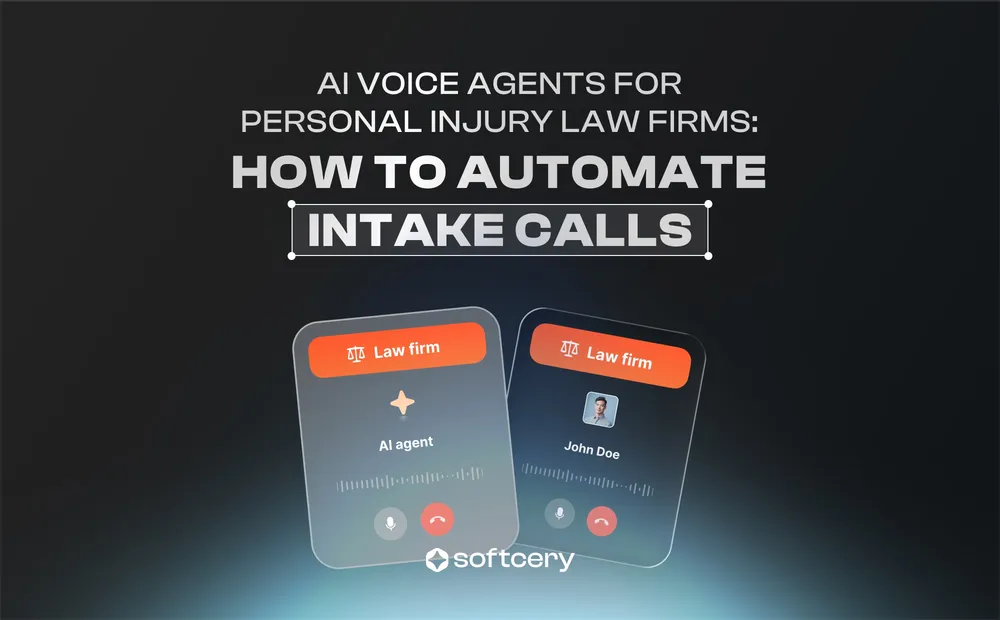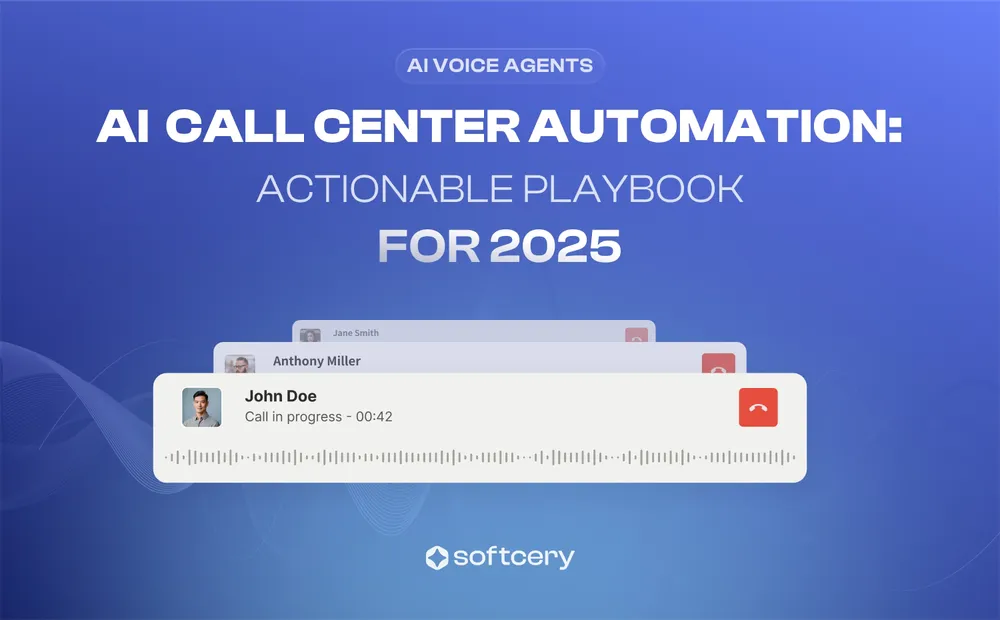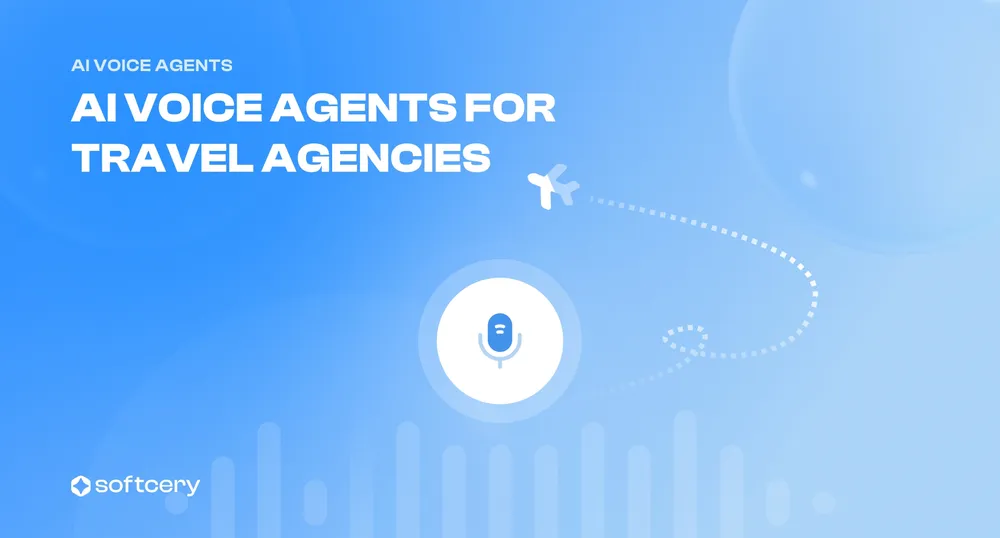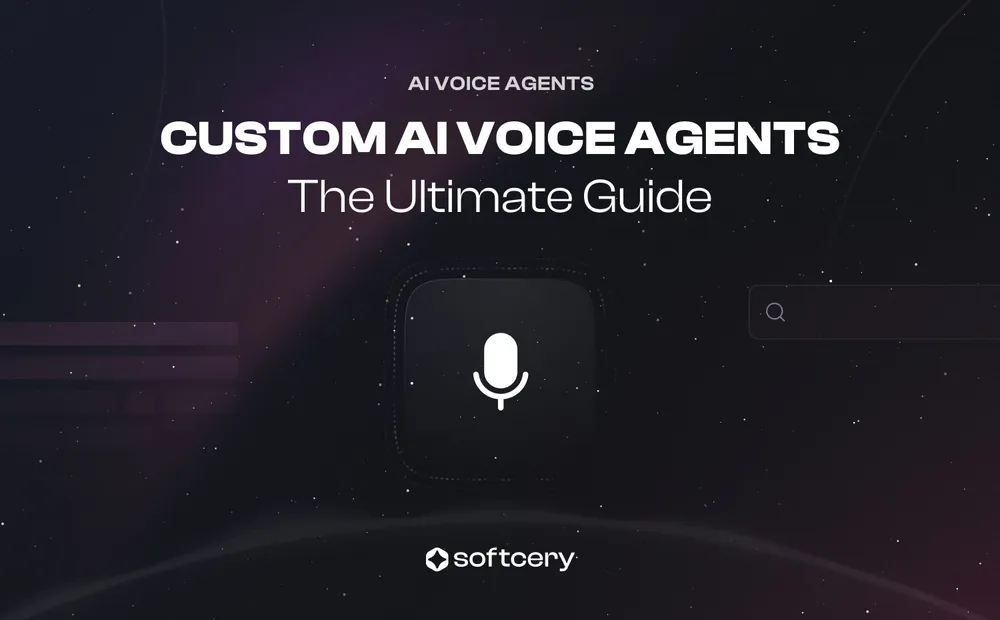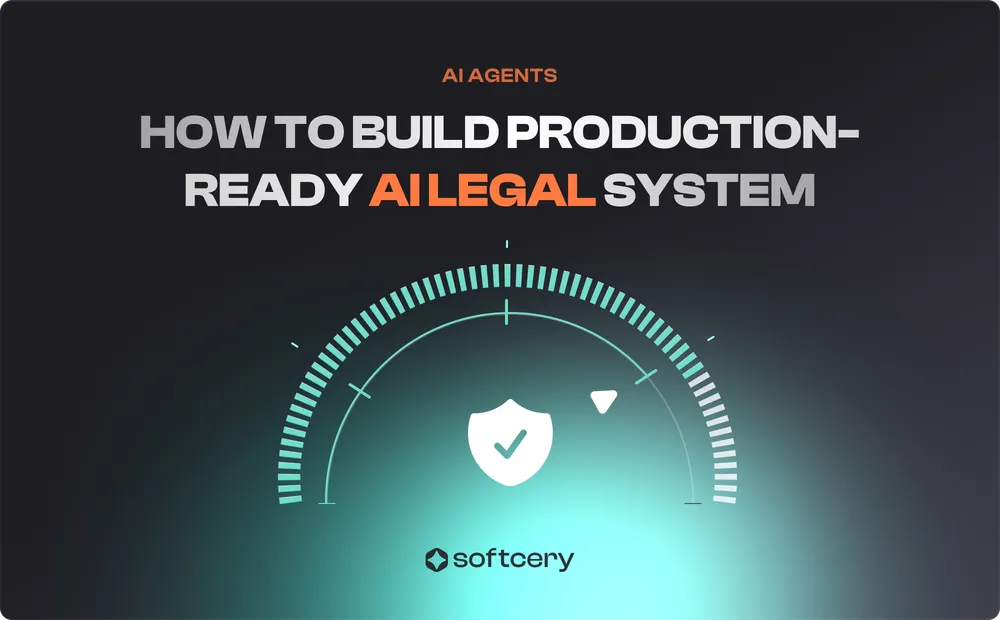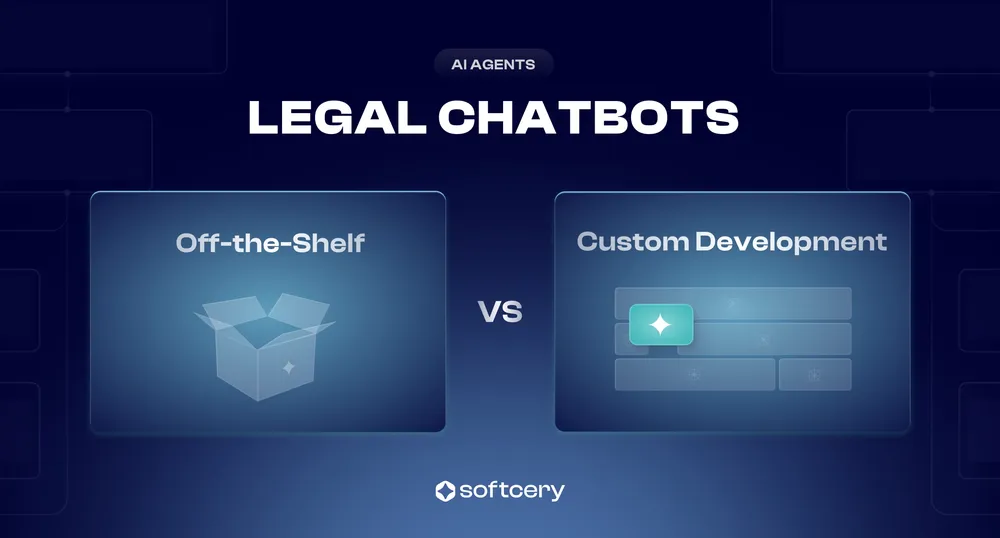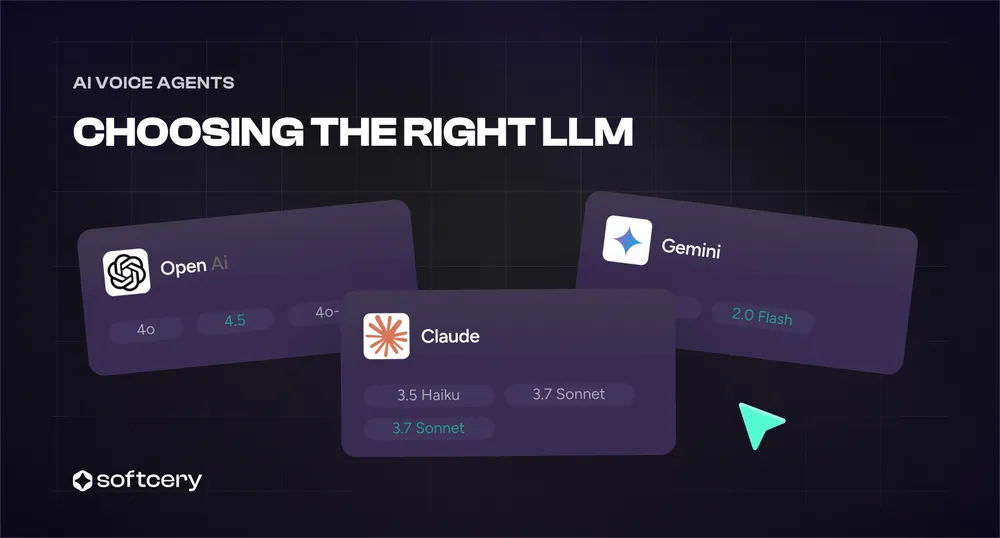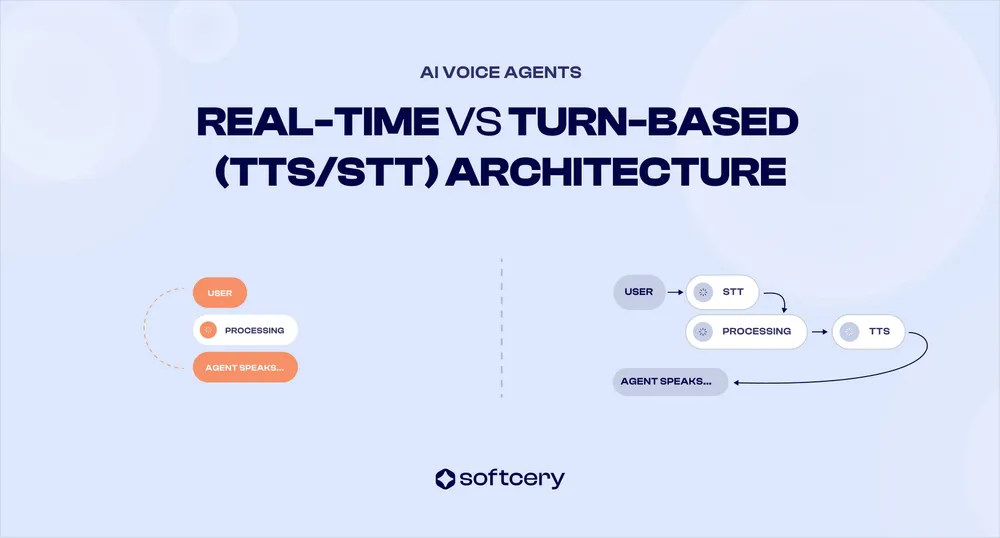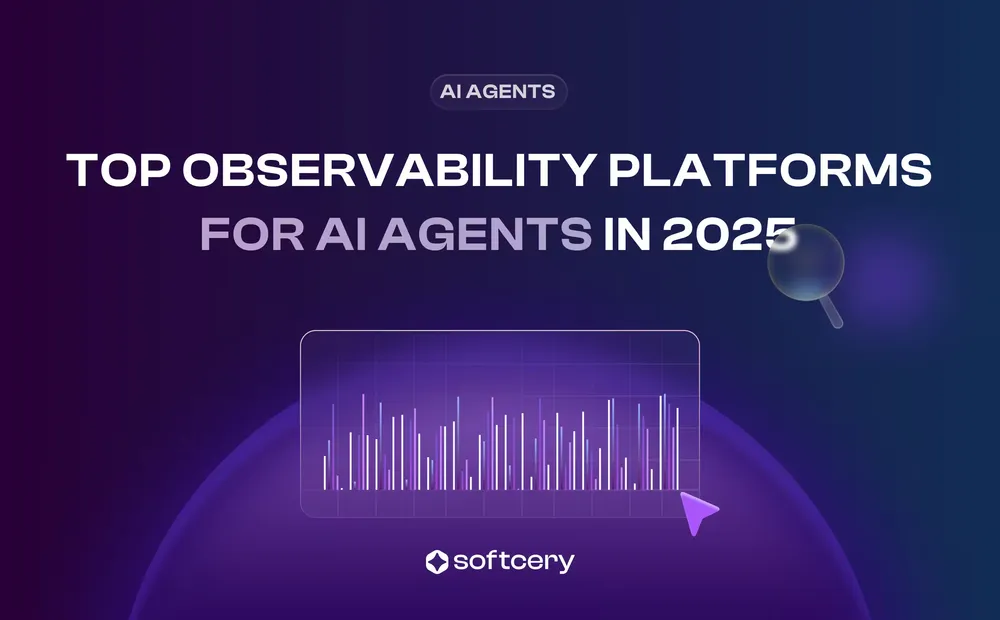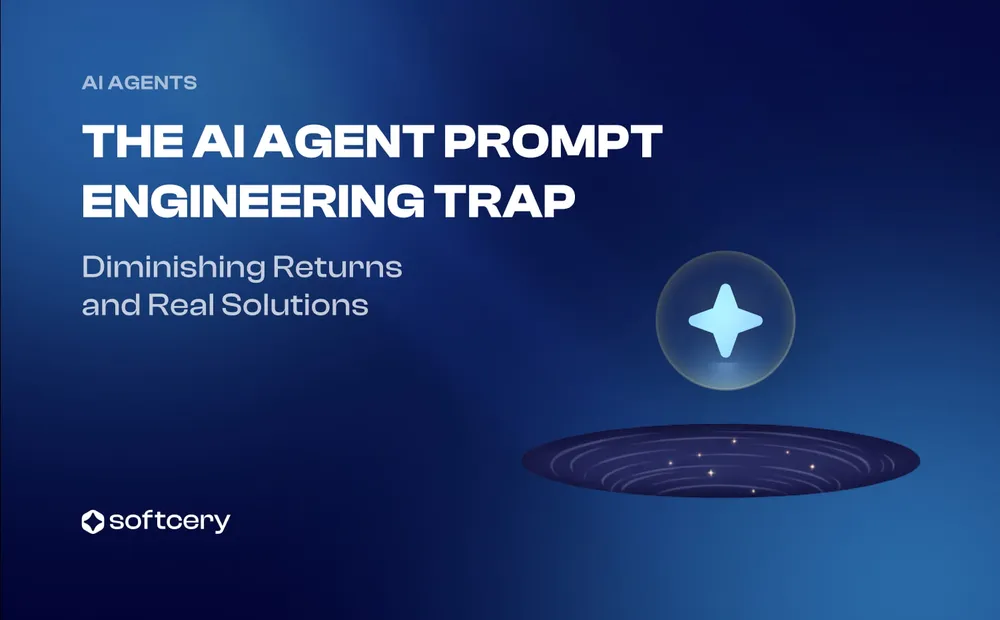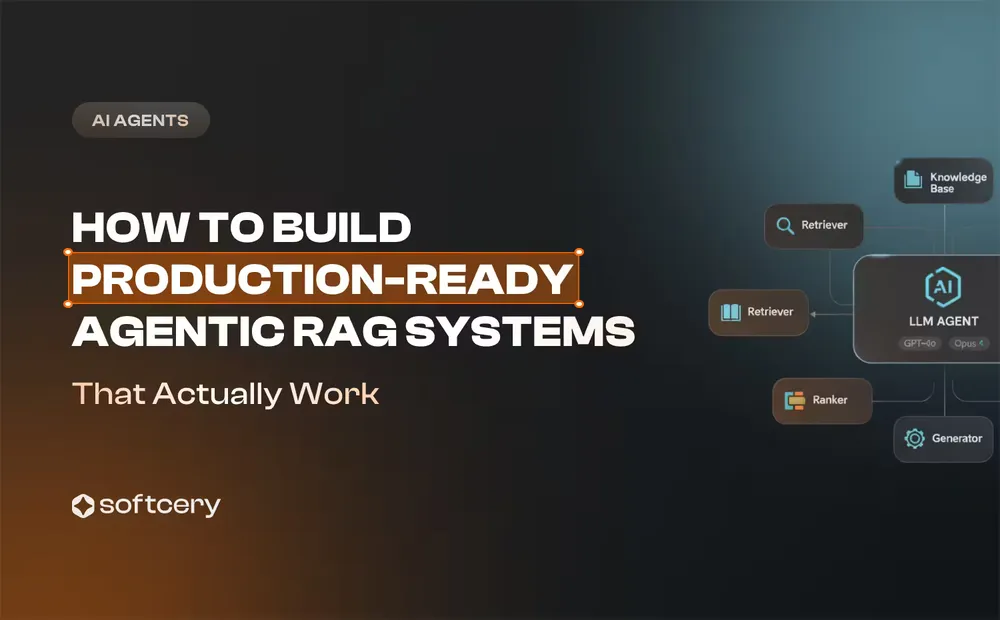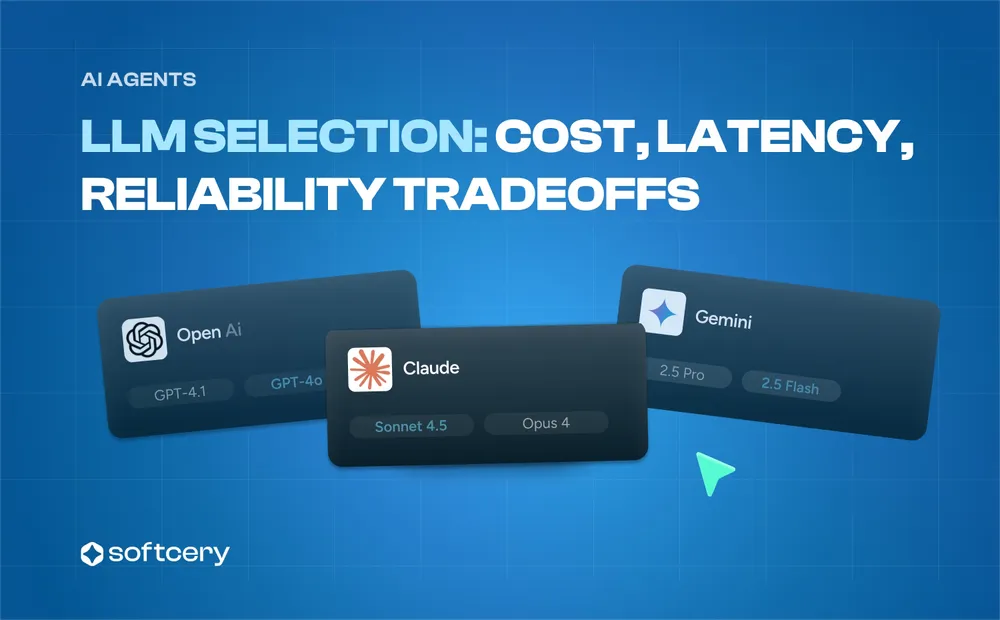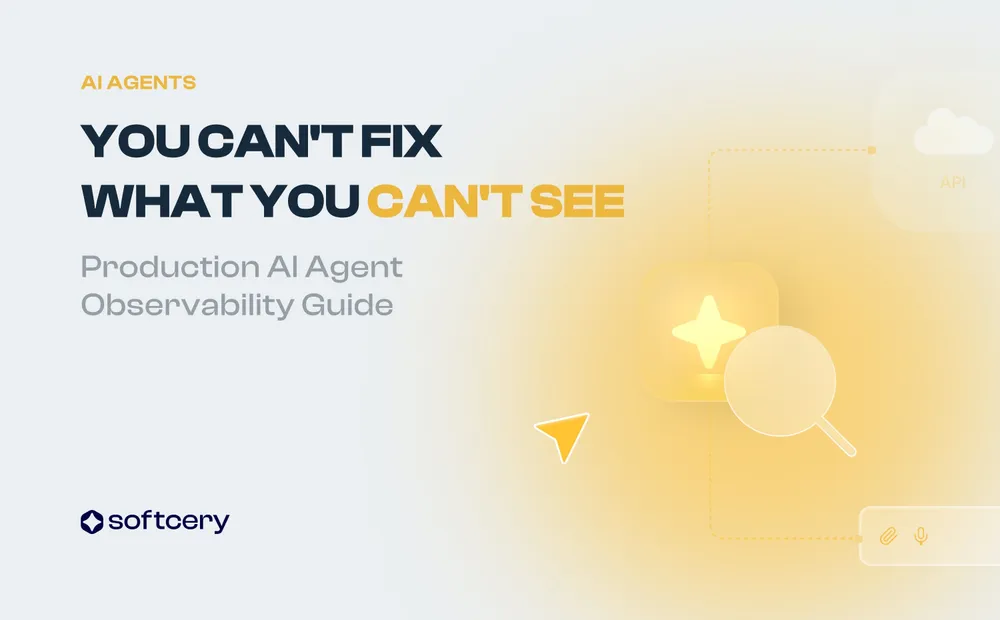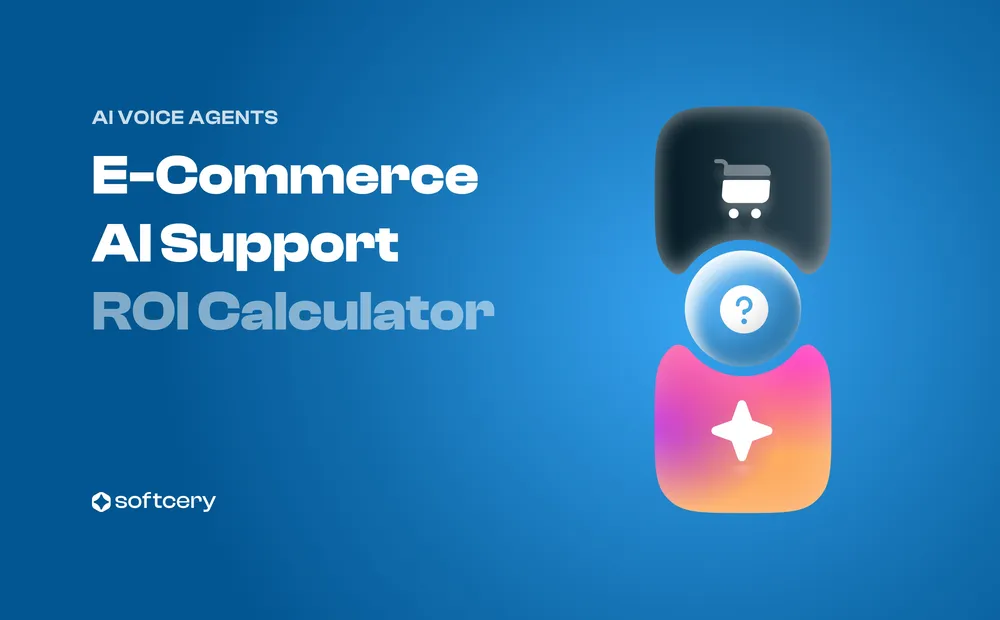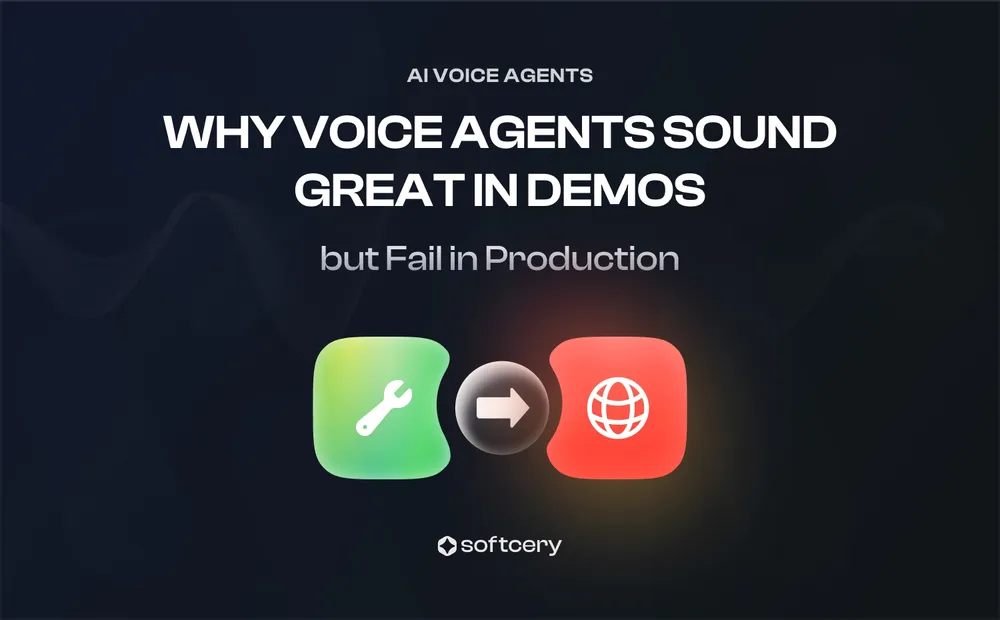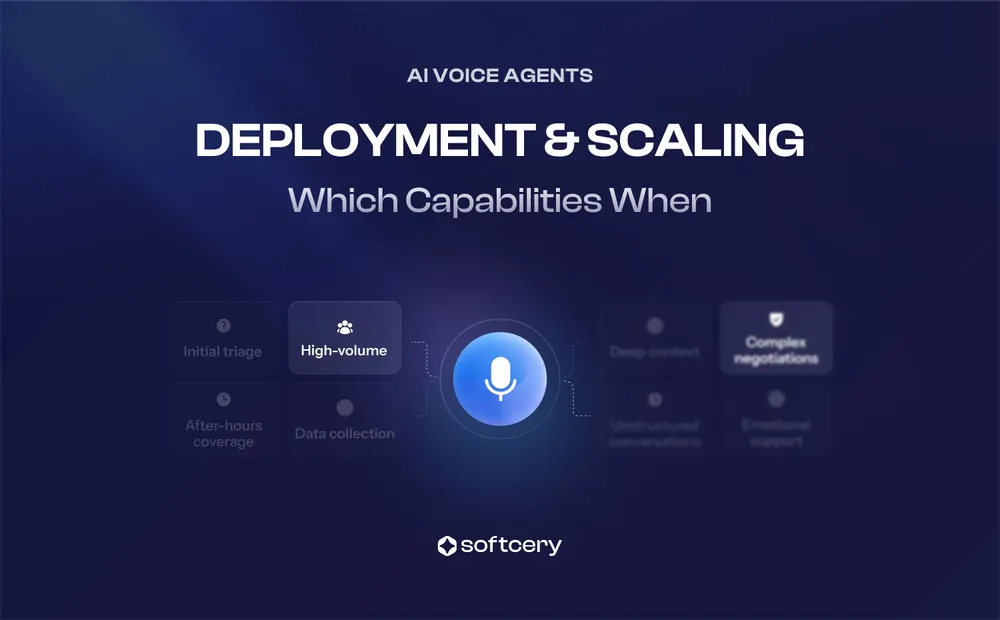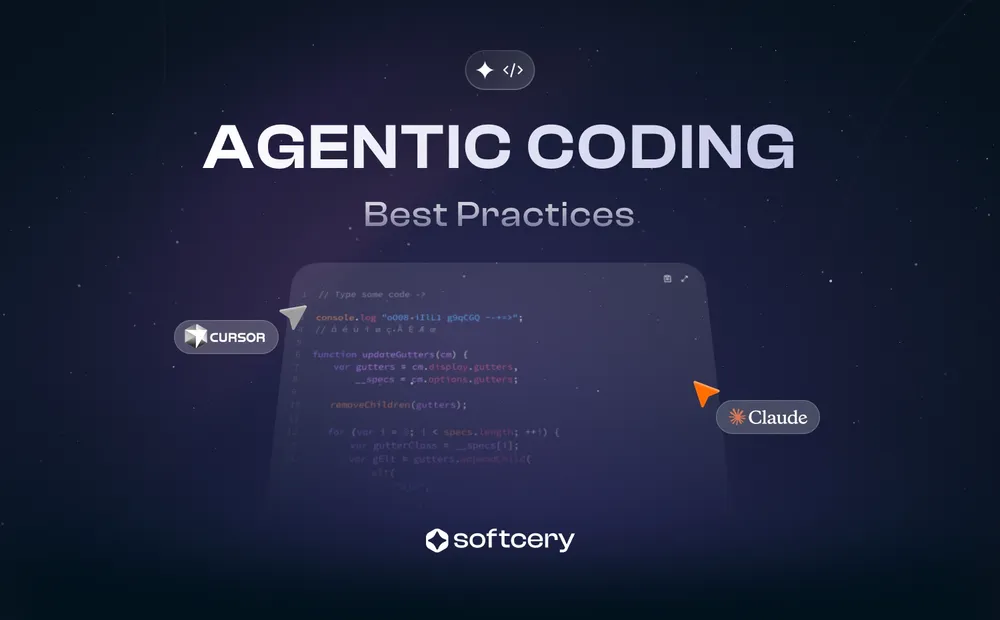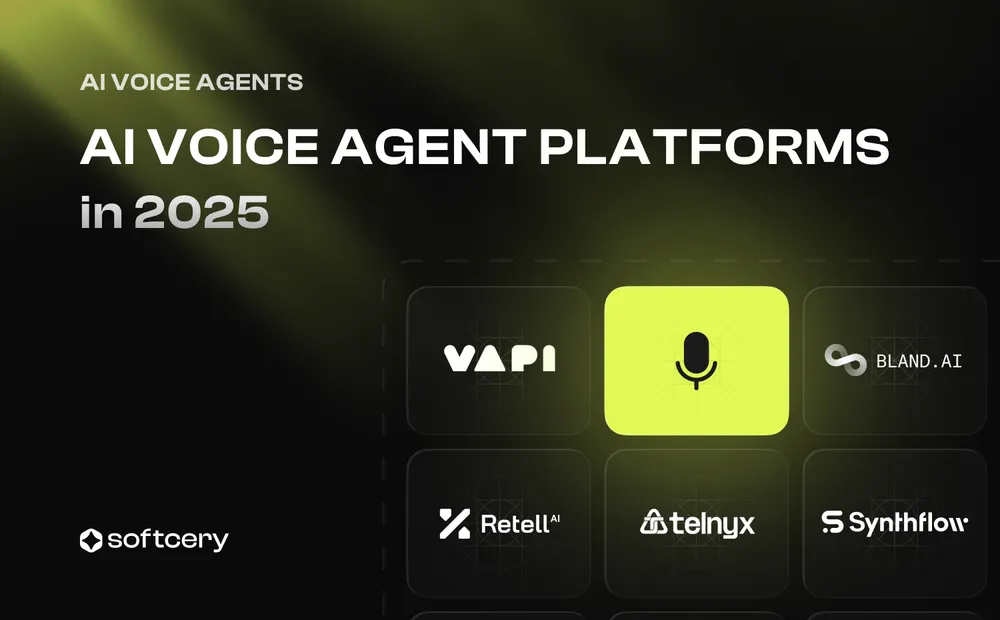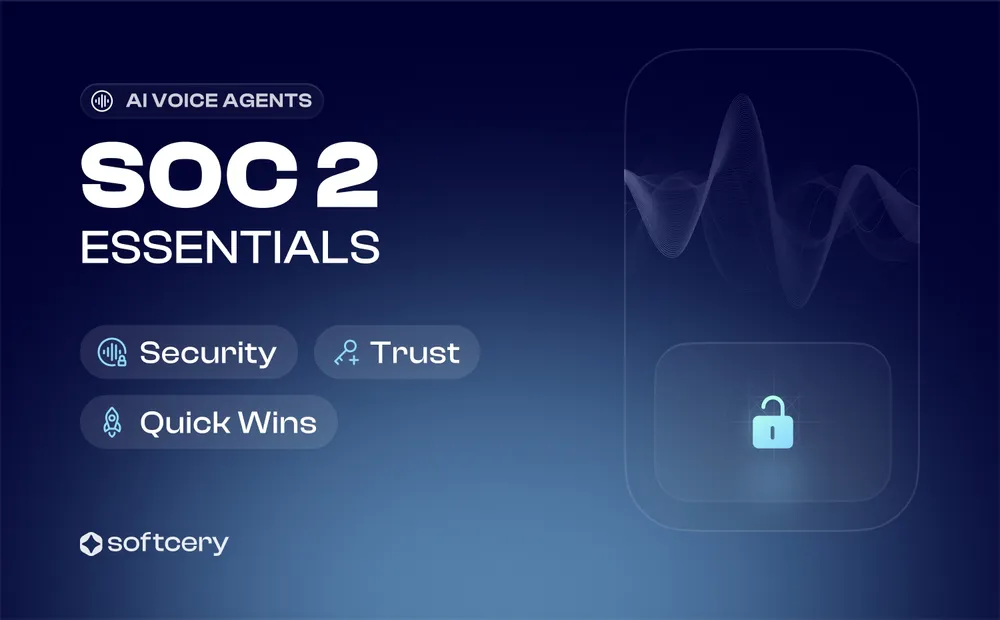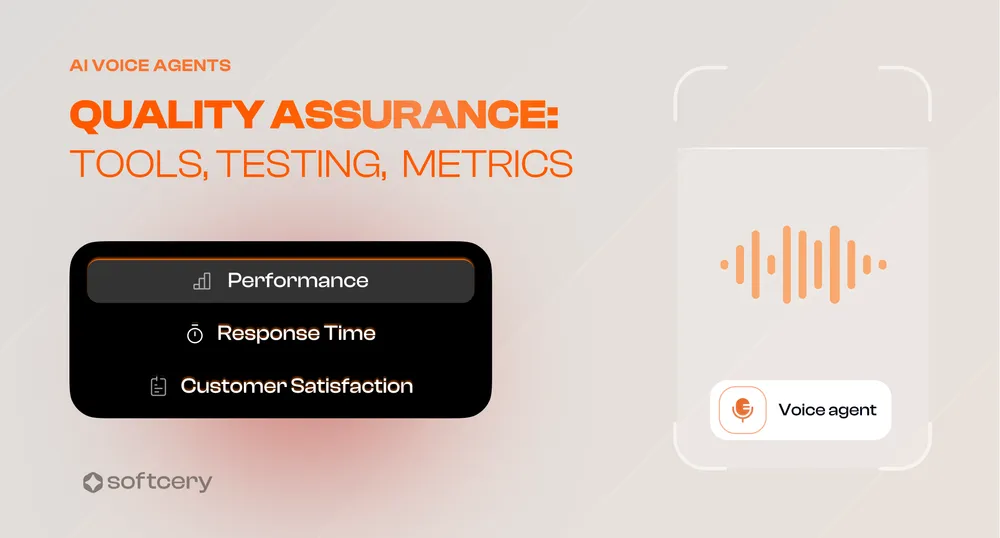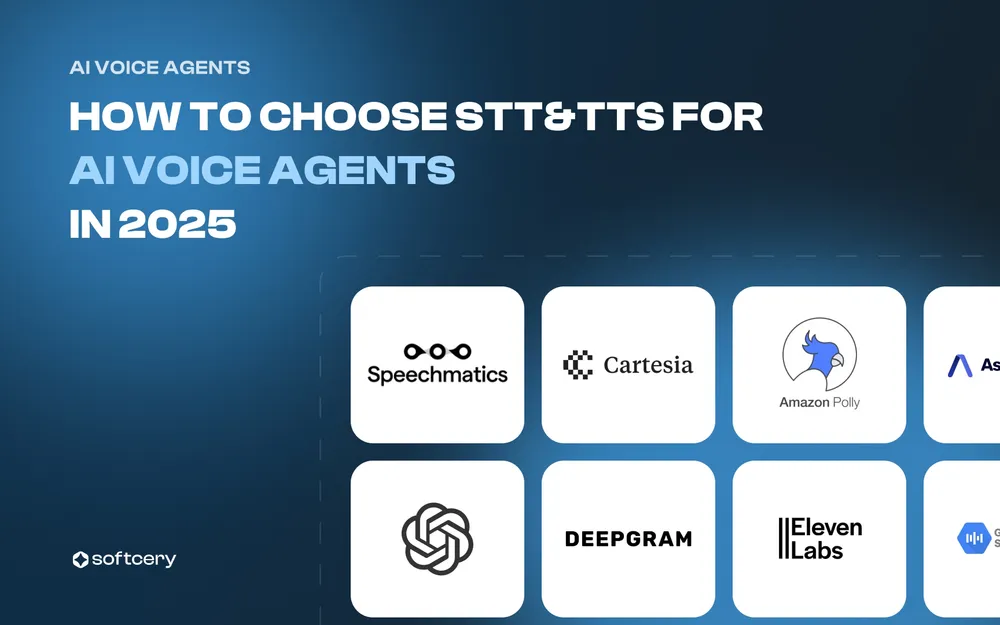AI Agents Break the Same Six Ways. Here's How to Catch Them Early.
Last updated on October 8, 2025
Your AI agent works in demos. It impresses stakeholders. Users want access. But between prototype and production lies a minefield of technical patterns that kill 40% of agent projects before launch, according to Gartner.
Most production failures trace back to six common patterns: choosing agents when simpler AI solutions might work, building production systems on PoC architecture “that already worked almost perfectly”, underspecified external integrations, not building with testing in mind, lacking observability, and all-in rollouts. These aren’t the only ways agents fail, but they’re where teams building agents for the first time consistently stumble.
The good news: each pattern has clear warning signs and concrete fixes. The bad news: each one compounds the others if you miss it.
Let’s dive into what fails, why it compounds, and how to fix it while you still can.
Six common failure patterns
1. Building agents for just building agents
Problem
Teams often jump to “agents” for problems that don’t need open-ended autonomy. You lose predictability, debuggability, and cost control – and that’s not theoretical. Even with single LLM calls or simple workflows, hallucination rates around 5% are already considered good. Each additional step in a pipeline compounds the chance of failure (5% + 5% next, etc.). You don’t need a calculator to see what happens when an agent makes 12 autonomous turns on autopilot.
This doesn’t mean agents are bad, only that they come with overhead. Sometimes, the smarter move is to design a system that stays simple, stable, and transparent rather than pretending to be “super-autonomous.”
Workflows, by contrast, are predefined code paths that can be logged and instrumented, with guards and checks at each step. You know exactly what happens at each step, and you can insert guards or checks wherever needed. Agents, on the other hand, choose their own steps and tools, which can be powerful, but also unpredictable.
Rule of thumb: start with the simplest approach that works. In many cases, that means a well-defined workflow, not an agent. Fancy agent frameworks sold as “flexible” add hidden layers, obscure prompts and errors, slow debugging, and push toward over-engineering.
Fix
-
Chose the correct solution from the start:
- Single LLM call: classifying a document; QAing a piece of content.
- Workflow: invoice parsing → validation → posting; report generation; content → QA → publish.
- Agent: a career-coaching agent that has a clear goal and uses limited tools (e.g., pulling user data or adding insights) where the conversation path isn’t predefined and can deviate slightly.
-
Use a workflow if you need multiple steps that you already understand and can monitor.
-
Add agentic components only where flexibility is essential. Keep the top-level orchestration deterministic.
-
Use frameworks. They are build by smart people, but make sure you clearly and concretely understand what’s happening inside.
-
Even as a non-technical founder, you should understand what your agent is doing and how. If not, expect phantom bugs.
Get the complete production readiness framework in the AI Go-Live Plan—assessment checklists, architecture patterns, testing templates, and rollout strategies that address each of these six failure patterns.
2. Building the production solution on PoC architecture
Problem
It usually starts the same way:
- “We have a quick PoC that handles multiple types of queries.”
- Then: “Let’s polish it for production.”
- Then: “We added 13 more query types into the same prompt.”
Now the model is overloaded, the architecture frozen, and small fixes for one case break another. The initial “wow” demo turns into an unmaintainable mess. Teams refuse to refactor because “it already worked before.”
But in agentic systems, this mistake is worse than in standard software. In normal engineering, poor decomposition mainly hurts developer experience – messy code, harder QA, slower iteration. With proper testing, you can still ship correct results. In agents, poor decomposition directly affects the end result seen by users. Because reasoning, routing, and action selection all happen inside the model, tangled logic translates to wrong tool calls, bad decisions, or hallucinated steps – not just messy code.
Root causes:
- Overloaded prompts mixing classification, reasoning, and action generation.
- Wrong memory or orchestration design for production load.
- Tools bolted in without clear interface contracts.
- Architecture never stress-tested under realistic inputs or concurrency.
- No routing, orchestration, or clear separation of concerns.
Fix
-
It’s absolutely normal to re-architect after the PoC. A PoC tests business need, not technical feasibility for production.
-
Define acceptance criteria before implementing even single production LLM call – accuracy, latency, cost, and error tolerance. But also plan for the future: will this need to support more use cases in six months? How many users will this serve? What additional capabilities are likely to be requested? Build the architecture with that growth in mind, not just for what’s needed today. This forward planning also affects LLM model selection. A model that performs well in a PoC with 100 queries per day might become prohibitively expensive at 10,000 queries per day – a unit economics problem that kills many production deployments.
-
Prepare datasets for complex scenarios – include noisy, ambiguous, or multi-step cases your agent will face in production and just stress-test early.
-
Think how you might decompose the workflow early and add more use cases if needed in the future. It’s not rocket science, there are several patterns to choose from, but it’s easy to miss and can become a big headache later. Below are some patterns to consider with examples:
How to decompose workflows
A few solid design patterns can help you turn complex flows into manageable, testable parts:
-
Prompt Chaining (Pipeline Decomposition): Break a task into ordered sub-steps. Each LLM handles one piece, validated before the next. Example: generate outline → check outline → expand sections.
-
Routing (Input Classification + Dispatch): First classify the input, then send it to a specialized prompt or tool. Routing directs input to a specialized follow-up task – without this, optimizing for one kind of input can hurt performance on others. Example: detect whether a user request is billing, technical, or account-related, and route accordingly.
-
Parallelization: Run independent subtasks at once and merge results later. Example: summarize multiple sources or documents in parallel.
-
Orchestrator–Workers Pattern: A central LLM dynamically breaks down tasks, delegates them to workers, and synthesizes results. Example: coding or refactoring tasks across many files.
-
Evaluator–Optimizer Loop: One model proposes, another evaluates and refines. Example: idea generation followed by quality ranking or scoring.
How to apply:
- Identify distinct input types → create routers for them.
- Build short pipelines for predictable sequences.
- Use orchestrators only when subtasks truly need dynamic decomposition.
- Add evaluator loops for tasks needing iterative improvement.
- Instrument each component with clear validation and logging.
For voice agents specifically, production readiness requires additional considerations around latency, speech recognition, and conversation flow that go beyond standard agent architecture.
3. Paying not enough attention to external services integration
Problem
Agents often fail because the systems they interact with are brittle or underspecified. The issue isn’t the agent – it’s the tools or the tool contracts. You must understand that tools effectively become part of the prompt – and often the most important part of it. If a tool is vague, inconsistent, or misdescribed, the agent’s reasoning chain breaks no matter how well the model itself performs.
There are only some of them we’ve seen regularly:
Pagination missing: the endpoint returns only the first page, so the agent loops endlessly or delivers partial results.
Overly strict search: querying acetaminophen 500 mg misses Acetaminophen 500 mg – 40 ct; the result is “no products found.” The error is in the API, not the agent.
Sorting/filters absent: the agent can’t select “latest order” without a server-side sort.
Non-idempotent writes: retries create duplicates or trigger side effects.
Auth quirks / rate limits: the agent thrashes or times out with unclear error messages.
Fix
-
Treat tool and API design as first-class work, not an afterthought.
-
Treat tool schemas and parameter semantics as part of your agent’s prompt surface – every tool definition shapes how the model thinks and acts.
-
Return structured JSON, not free-form text.
-
Document all limits, required vs optional parameters, and exact error shapes.
-
Use formats the model can reliably output; avoid nested, verbose, or exotic formatting that increases failure rates.
-
Tool definitions should be given just as much prompt-engineering attention as prompts themselves. Keep the format close to what the model has seen naturally and avoid formatting overhead.
4. Started building blindly without having a testing framework
Problem
After the PoC, most teams rush into development without test setups. For standard software projects, you can afford to build for months, then test for another month before release. For AI agents, that’s suicide. You’re dealing with non-deterministic development – behavior changes from one iteration to the next even if you don’t touch the model.
Without automated tests from day one, two problems compound:
First, manual testing by stakeholders becomes exponentially more painful than building proper test infrastructure would have been.
Second, you lose the ability to catch regressions—you might keep developing use cases 4, 5, and 6 while use case 1 is already broken. Without automated regression tests running against your dataset, you have no way to know if existing functionality still works.
And this doesn’t just pinpoint specific problems with your agent. They reveal when you’ve made incorrect architecture decisions. When fixing one part consistently breaks another, that’s your test suite telling you the architecture is wrong—not that you need better prompts. Test infrastructure is your early warning system. Without it, debugging becomes guesswork and teams waste weeks chasing phantom issues.
Fix
-
Include automated testing from day one after PoC.
-
Maintain a complex test dataset that mirrors your hardest production cases – even if it’s not 100% solvable, it gives a benchmark for progress.
-
Run these complex queries in parallel with active development.
-
Make quick, parallel runs of the hardest tasks part of every rollout, even in development.
-
Track key metrics: success rate, latency, cost, and consistency across versions. Building a voice agent? Here’s a comprehensive quality assurance framework with specific metrics and testing tools that apply to voice systems.
5. Lack of observability tools
Problem
When things go wrong, no one can say why. You and even engineering team members don’t see what happened under the hood, what took how long, or reproduce the exact same issue. When someone asks, “Why did this query fail?” nobody can answer within minutes, hours of guesswork needed.
Agentic systems are opaque by nature. Each run depends on prompts, intermediate thoughts, tool responses, and timing. Without structured logs, tracing a failure is impossible. That makes iteration slow, debugging chaotic, and reliability unknowable.
Fix
-
Add execution tracing and structured logging from the start – every LLM call, tool invocation, and response should be timestamped and stored.
-
Use existing open-source or managed observability platforms like Helicone and Langfuse. See our complete observability guide and platform comparisons. They can be set up in minutes and instantly give your team visibility into every call, latency metric, and failure path.
-
Use dashboards to track per-step latency, token usage, success/failure ratio, and tool calls.
-
Make every team member able to reproduce any run by ID.
-
Implement prompt versioning and input/output snapshotting to compare behavior across builds.
-
Review failures regularly – debugging without data is superstition.
6. All-in rollout
Problem
Imagine a day when you “flip the switch” and deploy the full agent to production – one big rollout. Everything breaks at once, and you have no isolated test cases or rollback plan. Users see the chaos first.
Most teams treat agents like traditional SaaS features – build everything, then ship. But agents are stochastic systems, and even small prompt or tool changes can cause unexpected regressions. A single end-to-end release hides which component caused failure.
Klarna tried to replace 700 customer service agents too quickly. Their bot failed on complex issues. They had to rehire humans and shift to a hybrid model. Better observability would have revealed the failure patterns during limited rollout instead of at full scale.
Production will always differ from testing, even with the most advanced dataset or perfect synthetic coverage. Real users ask questions you didn’t anticipate, use context you didn’t include, and expect answers you didn’t test for.
Fix
-
Roll out incrementally, feature by feature or route by route.
-
Start with AI-adoption-friendly customers – the ones who understand how AI works, expect rough edges, and provide structured feedback. They’ll help you find weak spots faster than internal tests.
-
Keep A/B comparisons between old and new versions – compare outcomes, not just pass/fail.
-
Run new logic in shadow mode first – process real queries but don’t expose results to users.
-
Maintain the ability to rollback instantly to the last stable configuration.
-
Monitor regressions continuously – use metrics, not vibes.
Where do you go from here?
You’re just starting or in PoC phase
If you’re still in the PoC phase or just considering building a production solution, this article shows you exactly what to avoid. Read it carefully. Each of these six patterns represents a fork in the road where one choice leads to production success and the other to the 40% cancellation rate.
The advantage of being early: you can design around these patterns from the start. Use workflows instead of agents where appropriate. Plan decomposition before building. Design tool contracts properly. Build testing and observability from day one. Choose models with future scale in mind. Plan incremental rollout before writing code.
You’re already deep in the problems
If fundamental design choices made at the very beginning already ruined the core architecture, fixing these issues can be challenging. A monolithic agent that should have been a workflow, or an architecture built without routing that now needs to handle 50 different input types – these require significant rework.
But it’s still possible. The question is whether to refactor incrementally or rebuild strategically. That decision depends on how deep the architectural problems go and how much technical debt has accumulated.
Analyze your current system against these six patterns. See which ones apply. If you’re hitting one or two, targeted fixes usually work. If you’re hitting four or more, the foundation might need rebuilding. But either way, production readiness is achievable – it just requires honest assessment of where the gaps are.
Get your personalized AI Go-Live Plan—assessment checklists, architecture patterns, testing templates, and rollout strategies that address each of these six failure patterns.
Whether you’re just starting to plan your production architecture or already dealing with these challenges, each case is unique. While the patterns remain the same, the strategy for implementing fixes depends on your specific architecture, technical debt, compliance requirements, and timeline.
For early-stage projects, the framework helps you design around these patterns from the start. For existing systems, it provides a framework to assess which patterns apply and whether you need targeted fixes or strategic rebuilding.
Frequently Asked Questions
Demos use clean, expected inputs. Real customers ask ambiguous questions, use edge cases, and expect the agent to handle scenarios that never appeared in testing. The architecture that worked for demo queries breaks at scale because compounding failure rates become visible. Each additional step in a pipeline compounds the chance of failure. Even with single LLM calls, hallucination rates around 5% are already considered good. Production also surfaces integration problems (pagination issues, rate limits, auth quirks) that demos never hit.
A prototype proves the concept works. A production system proves it works reliably at scale with real users. Prototypes optimize for “does this solve the problem?” Production systems optimize for “does this solve the problem every time, even with unexpected inputs, while staying observable, testable, and maintainable?” This means adding decomposition patterns (routing, orchestration, parallel processing), structured tool contracts, automated testing frameworks, execution tracing, and incremental rollout infrastructure. The technical architecture is different because the requirements are different.
Treating the prototype architecture as the foundation and trying to polish it into production rather than redesigning for production requirements. The prototype was built to prove the concept works, optimizing for speed and flexibility. Production requires decomposition, observability, testing, and resilience. Teams add features to the prototype, encounter failures, add patches, and eventually have an unmaintainable system where every fix breaks something else. The second biggest mistake: launching everything at once instead of incremental rollout with monitoring and rollback capability. Both mistakes stem from treating agents like traditional software rather than stochastic systems that fail probabilistically.
Use a workflow when the steps are predictable and understood. Workflows are predefined code paths where you orchestrate LLMs and tools through explicit logic you control. Use an agent only when you need genuine flexibility in how tasks get accomplished. The rule: start with the simplest solution. A single LLM call with proper context is often enough. If you need multiple steps, use a workflow with defined transitions. Add agentic components only where the path genuinely varies based on intermediate results. Examples: invoice parsing to validation to posting is a workflow. Complex customer support where the conversation path depends on unpredictable user needs might justify an agent. The mistake is building “self-reflecting autonomous super-duper agents” for problems that could be solved with three API calls in sequence.
Not always. Rebuild if the prototype treats every task as a single LLM call without decomposition, uses unstructured tool responses, or lacks any error handling. Refactor if the basic workflow structure is sound but missing observability, testing, or proper tool definitions. The signal: if adding one production requirement breaks three other things, the foundation is wrong. Most prototypes need architectural redesign in specific areas rather than complete rewrites. Routing logic, tool contracts, and orchestration patterns typically need rebuilding while core business logic can often be preserved.
Three likely causes: overloaded prompts mixing too many responsibilities without decomposition, brittle tool integrations that fail on edge cases your demo never hit, or lack of routing logic that treats all inputs the same. “Random” failures are usually deterministic problems triggered by specific input patterns that testing didn’t cover. Without observability (structured logging, execution tracing, reproducible runs by ID), these patterns stay invisible and feel random. The fix starts with visibility into what’s actually happening, not guessing at prompt tweaks.
Build an automated testing framework that covers happy path workflows, common failure modes (API timeouts, malformed responses, missing data), boundary cases (empty inputs, maximum lengths), and multi-turn conversation context. Maintain a dataset of your hardest production scenarios. Even if they’re not 100% solvable, they benchmark progress. Run these tests parallel to development, not as a pre-launch phase. Track success rate, latency, cost, and consistency across versions. The goal isn’t 100% pass rate, it’s knowing what breaks and why.
Observability platform for execution tracing and structured logging (Helicone, Langfuse, LangSmith). Testing framework for automated evaluation (Promptfoo, Braintrust). Everything else can be assembled from standard infrastructure (databases, monitoring, deployment pipelines). The mistake is trying to build observability and testing custom (expensive and slow) or skipping them entirely (impossible to debug). Use platforms for infrastructure, build custom for business logic and tool definitions.
Yes, with constraints. Launch to a small cohort of technical, forgiving customers who understand they’re using a beta and will provide structured feedback. Maintain manual review of every interaction or implement human-in-the-loop approval for consequential actions. Set narrow usage boundaries (specific use cases only, no edge cases). This works for a limited time before customer patience or manual review burden becomes unsustainable. The alternative is shadow mode: run the agent alongside existing processes without making real decisions, gathering production data while building confidence. Both approaches require the ability to rollback instantly.
You need clear answers to these questions. Can you reproduce any failure by ID and understand exactly what happened? Do you have automated tests covering your hardest real-world scenarios with known success rates? Can you rollback instantly if something breaks? Do your tools return structured, validated responses with clear error states?
Have you decomposed overloaded prompts into specific responsibilities (routing, reasoning, action)? Can you monitor per-step latency, cost, and failure rates in real time? Is there a plan for incremental rollout to a small user cohort before full launch?
If any answer is no, the infrastructure isn’t ready even if the agent performs well in demos.
Focus on the 20% that actually moves the needle. Your custom launch plan shows you exactly which work gets you to launch and which work is just perfectionism – so you can stop gold-plating and start shipping.
Get Your AI Launch Plan